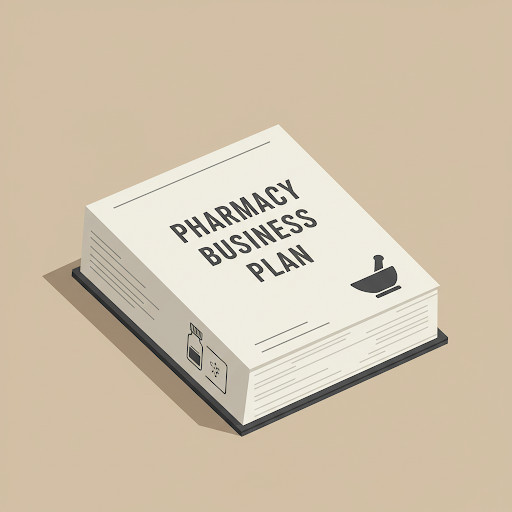views

Starting a pharmacy can be a lucrative and meaningful business venture, especially in today’s healthcare-driven world. However, success in this highly regulated and competitive industry depends heavily on careful planning. At the heart of every successful pharmacy lies a solid pharmacy business plan. This essential document serves as your strategic guide, outlining your goals, operations, market insights, and financial roadmap. Whether you're launching a retail pharmacy, compounding pharmacy, or online pharmaceutical service, your business plan sets the foundation for long-term growth and profitability.
Understanding the Purpose of a Pharmacy Business Plan
A pharmacy business plan is more than just a formality—it's your blueprint for success. It helps you define your vision, organize your resources, and navigate the complexities of pharmacy operations. Investors and lenders rely on this document to assess your business's potential and make informed decisions. Furthermore, a well-crafted business plan ensures that you're prepared to meet regulatory requirements, manage financial risks, and stand out in a crowded marketplace.
Step 1: Start with an Executive Summary
The executive summary introduces your pharmacy to potential stakeholders. It should briefly describe your business name, location, mission statement, and the type of pharmacy you plan to operate. This section should also highlight your unique services, such as prescription fulfillment, health consultations, delivery options, or custom compounding. Although it appears at the beginning of your pharmacy business plan, it’s best written last, as it summarizes all the key sections of the document.
Step 2: Define Your Company Description
In this section, provide a detailed overview of your pharmacy. Explain the ownership structure, your business history if applicable, and the overall goals of your venture. Be sure to outline your legal entity—whether you’re operating as a sole proprietorship, partnership, or corporation—and mention any licenses or permits required to start and run your pharmacy legally. This background sets the stage for understanding your pharmacy’s core identity and long-term vision.
Step 3: Conduct a Thorough Market Analysis
A comprehensive market analysis proves that you understand the industry and the customers you aim to serve. Discuss current trends in the pharmacy sector, such as increased demand for personalized care or the rise of telepharmacy. Identify your target market by detailing customer demographics, behavior, and health needs. Include a competitive analysis to show how your pharmacy will fill gaps in the market or offer superior value. Data-driven insights in this section are critical for building credibility with investors.
Step 4: Outline Your Organizational Structure
The success of your pharmacy depends on a skilled and compliant team. Describe your management team and their responsibilities, highlight the qualifications of your pharmacists and support staff, and explain how your organizational structure supports operational efficiency. If you’re working with consultants, advisors, or legal experts, mention their roles as well. Address regulatory compliance here, ensuring that your business will adhere to pharmacy licensing laws, safety protocols, and health board requirements.
Step 5: Describe Your Services and Products
This section should clearly list the products and services your pharmacy will provide. Whether you plan to dispense prescription medications, sell over-the-counter drugs, offer compounding services, or provide wellness consultations, make sure you explain how these offerings meet customer needs. You should also highlight any value-added services such as home delivery, mobile app integration, or loyalty programs. Emphasize how your offerings will stand out in a competitive landscape.
Step 6: Develop Your Marketing and Sales Strategy
A strong marketing plan is essential to attract and retain customers. In your pharmacy business plan, detail how you plan to position your brand in the market. Discuss your promotional strategies, such as digital advertising, local outreach, community health events, or referral programs. If you plan to have an online presence, outline your strategy for building traffic, engaging patients, and managing online reviews. Your marketing efforts should reflect both your brand identity and your understanding of local healthcare needs.
Step 7: Explain Your Operational Plan
The operational section describes how your pharmacy will function on a daily basis. Include details about your pharmacy’s physical layout, hours of operation, inventory management systems, and supplier relationships. Discuss the technology you’ll use to streamline operations, from point-of-sale systems to pharmacy management software. Safety protocols, workflow management, and customer service policies should also be covered to demonstrate your preparedness and professionalism.
Step 8: Include Financial Projections
Investors and lenders will scrutinize your financials, so this section of your pharmacy business plan must be clear, realistic, and data-backed. Outline your startup costs, including expenses for rent, equipment, licenses, inventory, and staffing. Provide revenue forecasts, cash flow projections, and a break-even analysis. Also include a profit and loss statement and specify how much funding you need, along with a plan for how the funds will be used. Offer projections for at least three to five years, and include visual aids such as charts or graphs to improve readability.
Step 9: Add Supporting Documents and Appendices
Finish your business plan with relevant documentation that supports your projections and claims. This might include resumes of key team members, pharmacy licenses, supplier agreements, market research reports, lease agreements, or equipment estimates. These appendices give your plan added depth and reinforce your preparedness to launch and manage a successful pharmacy.
Final Thoughts on Writing a Pharmacy Business Plan
Creating a winning pharmacy business plan takes time, research, and attention to detail. But the effort is well worth it. A well-structured plan not only guides your own decision-making but also enhances your credibility with investors, partners, and regulators. By outlining your strategy, operations, and financial goals clearly and professionally, you position your pharmacy for long-term growth in a competitive industry.
Whether you're just starting out or planning to expand your services, your pharmacy business plan is the first step toward turning your vision into reality. Treat it as a living document—one that evolves with your business and helps you stay aligned with your goals at every stage of your entrepreneurial journey.





















![How to Speak Directly to Robinhood Support? [Help Support]](https://timessquarereporter.com/public/index.php/upload/media/posts/2025-06/07/how-to-speak-directly-to-robinhood-support-help-support_1749305837-s.jpg)
Comments
0 comment